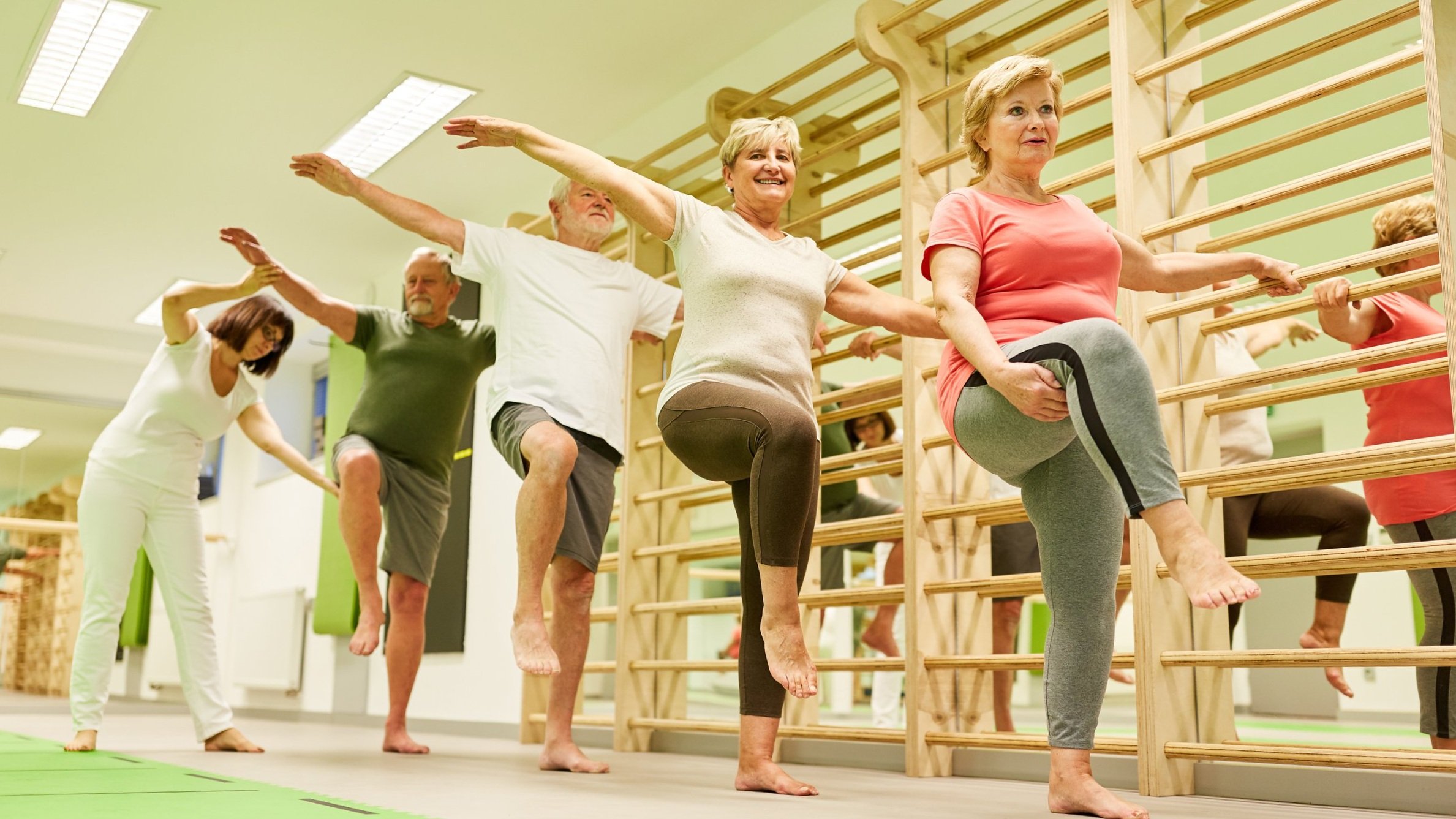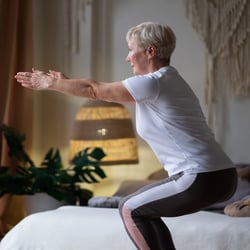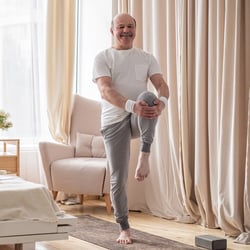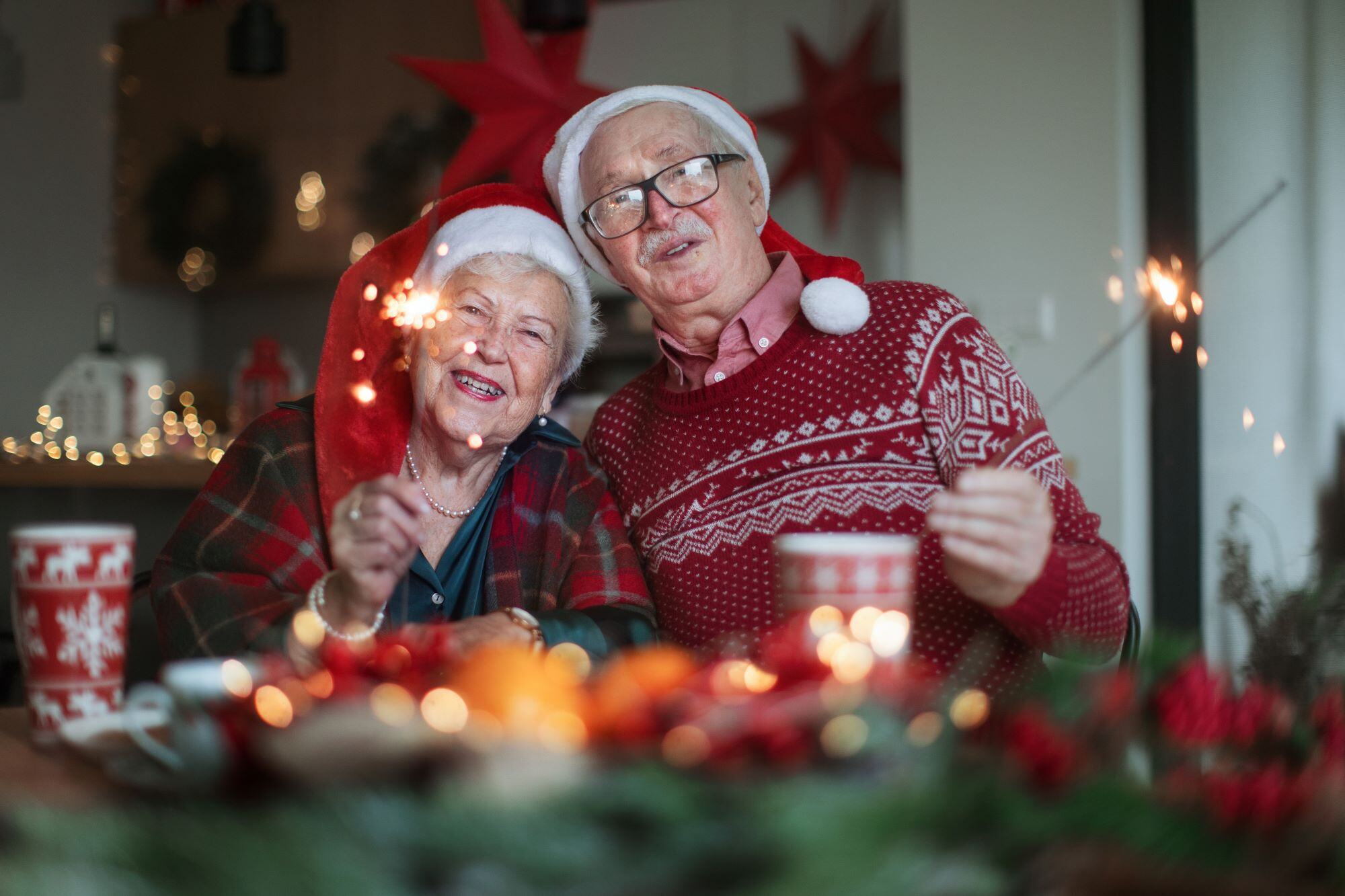Improve strength, balance and mobility to prevent falls from happening with these useful and easy-to-do exercises

While anyone can incorporate physical activities or exercises to maintain strength and balance, it’s especially important for older adults to do so because exercises that focus on maintaining muscle strength, bone density and mobility means that they have a better chance of staying strong and balanced, which is critical in managing fall risks and falls prevention.
For an older adult, whether living in a care setting or still at home, incorporating a programme of exercises into their daily routine means that they are able to better manage falls whether they happen or not.
Why exercises are so important
Improving strength and balance means falls are less likely to happen, but it also means that if they do, older adults are less likely to experience a lasting injury because of it. It’s very often the case that the injuries that are sustained after a fall, despite the obvious pain and physical distress, precipitate a spiralling trend of anxiety due to the fear of falling again, which in turn deters older people from taking part in more physical activities, which then leads to greater isolation and muscle atrophying, reduced bone density and general frailty, which then makes the consequences of a fall even worse.
While it’s important to manage fall risks and do everything possible to prevent falls by conducting thorough reviews of care provision and the environment care home residents live in, not to mention managing medications to avoid polypharmacy-induced falls, and learning as much as possible from trends in falls to ensure that all preventative measures are taken, encouraging care home residents to participate in exercise programmes that work to increase muscle strength, balance and bone density is a powerful way to ensure that falls and the impact of them are both prevented and mitigated at the same time.
It will help older adults living in care homes to maintain an active lifestyle, to continue doing the things they enjoy, and it will make feelings of isolation and anxiety less potent because the fear of falling and the withdrawal that comes with it will be less likely to dictate their quality of life. So, with that, here are some of the top exercise ideas that will help with falls prevention.
Sit-to-stand

Why it helps: When older adults sit for long periods of time, it means that the muscles in their legs can become weaker and less responsive, which then means that when they try and stand up, the muscles in their legs and back are either unable to support their weight or are unable to coordinate in order to walk properly, so the older person ends up falling. But by practicing the movement safely and in a controlled way, it allows the care home resident to build the muscles in their legs as well as strengthen the muscle memory associated with this movement.
Step ups and downs
Why it helps: It’s all-too common for older adults to find themselves in positions where they are unable to support their weight when either climbing or descending from stairs or even a single step. Not only because of a lack of strength in the leg muscles, but balance can be an issue in this scenario too. And given that the consequences of falling in this situation are particularly acute, ensuring that regular step up and down exercises are done to reinforce the muscle and tendon strength around such a movement is vital. With this movement, it will help a care home resident to build strength in the muscles that are recruited in the movement either up or down steps, and the repetition will help them with the balance and mobility required to do it safely.
Wall slides
Why it helps: This exercise is mainly about mitigating and managing a fall should it occur. By resting the back up against the wall and using the muscles in the legs to slide up and slide down in a controlled way, it allows an older person who might find themselves off balance and against a wall to safely slide down in a controlled manner so as not to injure themselves, or to use the muscles in their legs, back and the stabilising muscles in the core to pull themselves back onto their feet using the wall for assistance.
Single-leg balance (both with and without support)

Why it helps: While this exercise helps to improve the strength in each leg to ensure that if an older person is caught off balance, they are more likely to be able to regain control, it also helps to ensure that doesn’t happen in the first place because it helps to increase balance and mobility. This can be done slowly and safely with the help of a chair or table for support, and then once strength and balance are improved, this can be done in an even more challenging way by removing the support to further improve balance and muscle strength.
There are many exercise programmes available on Oomph! On-Demand that are great for preventing falls by building strength and balance, but also ensuring greater health, fitness and overall quality of life. For more information on the Oomph! Wellbeing and Activities Platform, just click here






